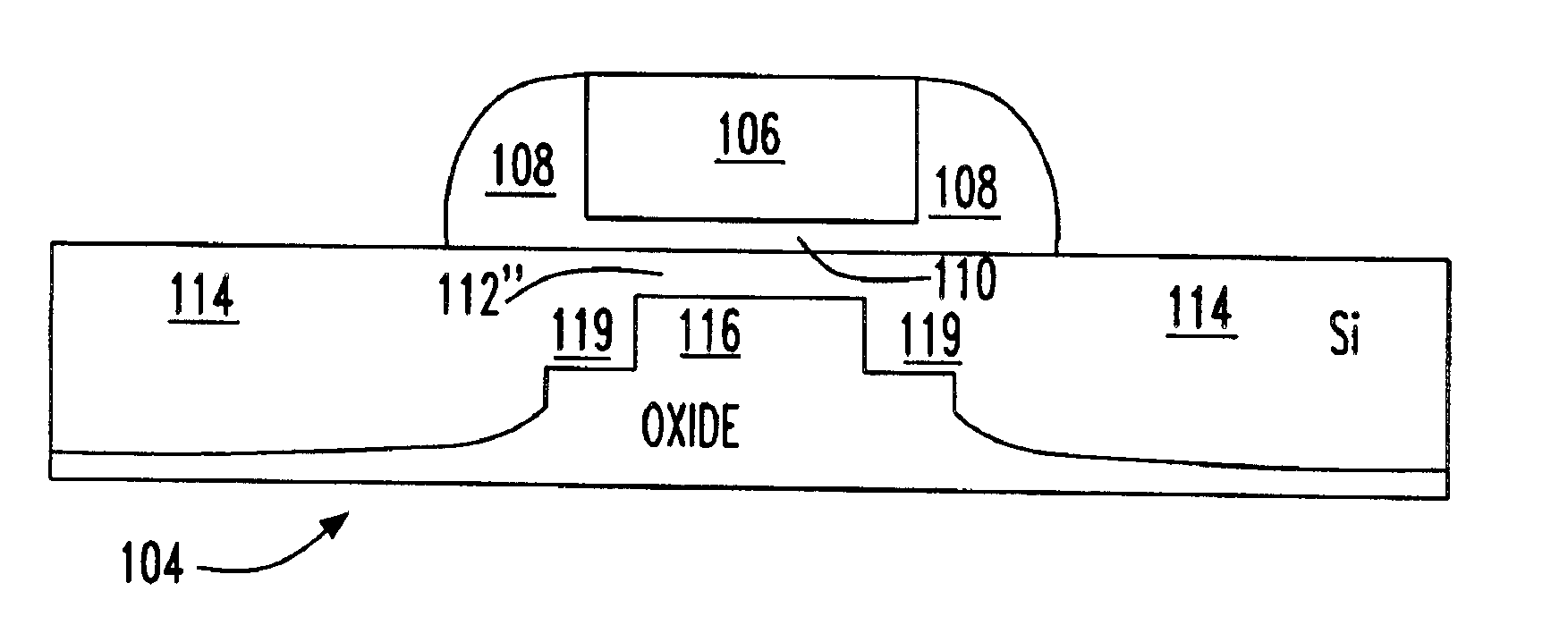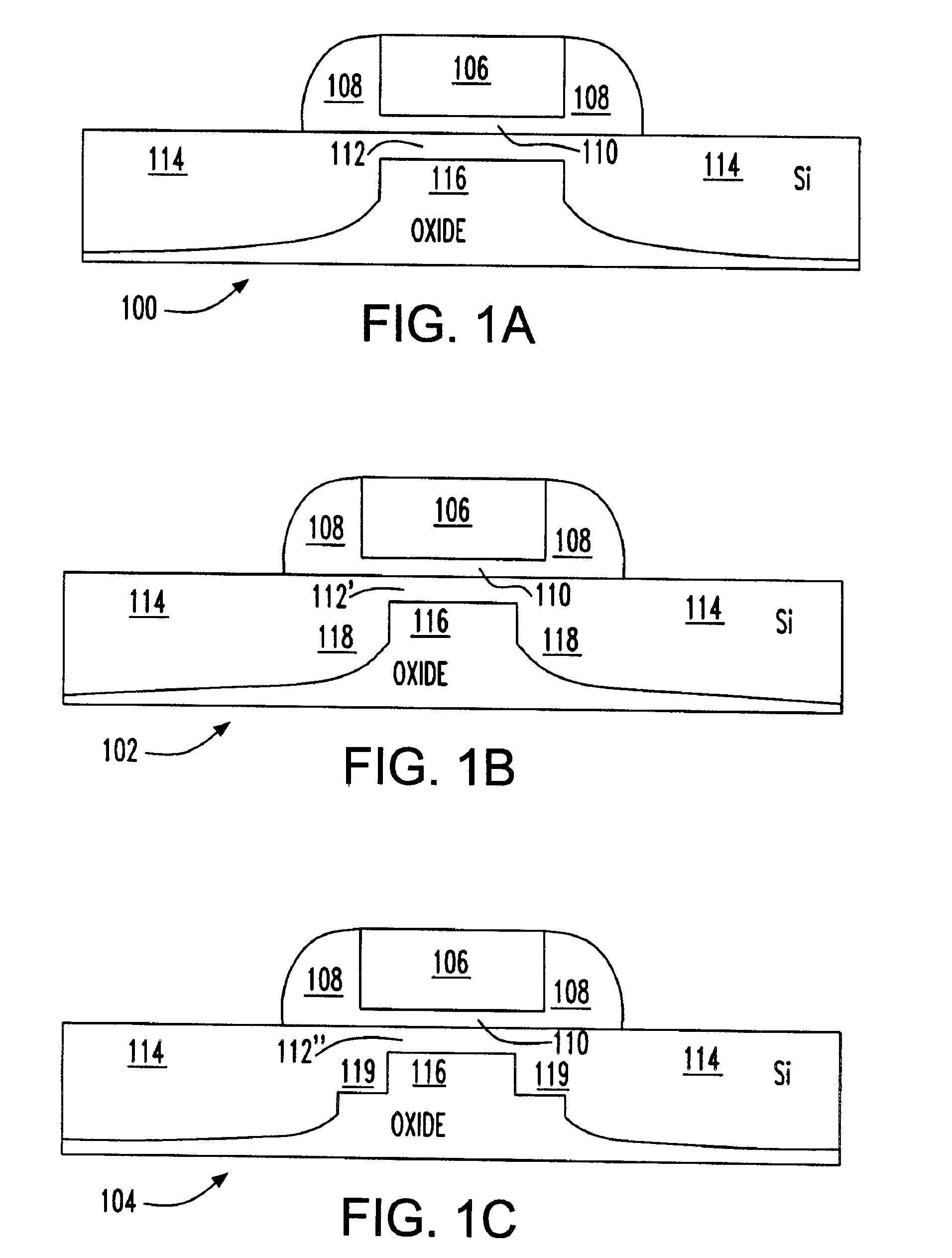Thin channel FET with recessed source/drains and extensions
a thin channel, source/drain technology, applied in the field of high-performance field-effect transistors (fets), can solve the problems of device leakage including gate leakage, chip power consumption has increased, and cooling and packaging costs have increased, so as to improve ultra-thin soi performance, reduce external resistance of ultra-thin soi devices, and improve the effect of ultra-thin soi performan
- Summary
- Abstract
- Description
- Claims
- Application Information
AI Technical Summary
Benefits of technology
Problems solved by technology
Method used
Image
Examples
Embodiment Construction
[0024]Turning now to the drawings and, more particularly, FIGS. 1A-C, each show an example of a field effect transistor (FET) 100, 102, 104 with self aligned recessed source / drain regions and extensions according to a preferred embodiment of the present invention with like elements labeled identically. In particular, FETs 100, 102, 104 may be typical devices in a circuit, such as a CMOS circuit on an ultra-thin (smaller than or equal to 15 nanometers (10 nm)) semiconductor on insulator (SOI) CMOS chip.
[0025]So, in the FET 100 example of FIG. 1A, a gate 106 has spacers 108 at each side. Preferably, the gate 106 is polysilicon, a metal, silicon-germanium (SiGe), a silicide or combination thereof and the spacers 108 are nitride. The gate 106 is on a gate dielectric layer 110 (e.g., oxide) above an ultra-thin channel 112, an ultra-thin semiconductor layer of strained silicon (SSi), Germanium (Ge), SiGe or, preferably, silicon (Si). The ultra-thin channel 112 is less than 40 nm long and,...
PUM
 Login to View More
Login to View More Abstract
Description
Claims
Application Information
 Login to View More
Login to View More - R&D
- Intellectual Property
- Life Sciences
- Materials
- Tech Scout
- Unparalleled Data Quality
- Higher Quality Content
- 60% Fewer Hallucinations
Browse by: Latest US Patents, China's latest patents, Technical Efficacy Thesaurus, Application Domain, Technology Topic, Popular Technical Reports.
© 2025 PatSnap. All rights reserved.Legal|Privacy policy|Modern Slavery Act Transparency Statement|Sitemap|About US| Contact US: help@patsnap.com



